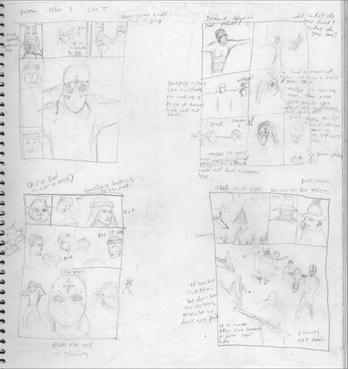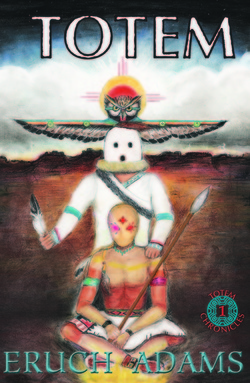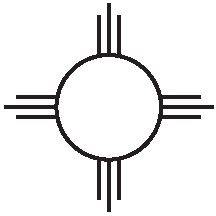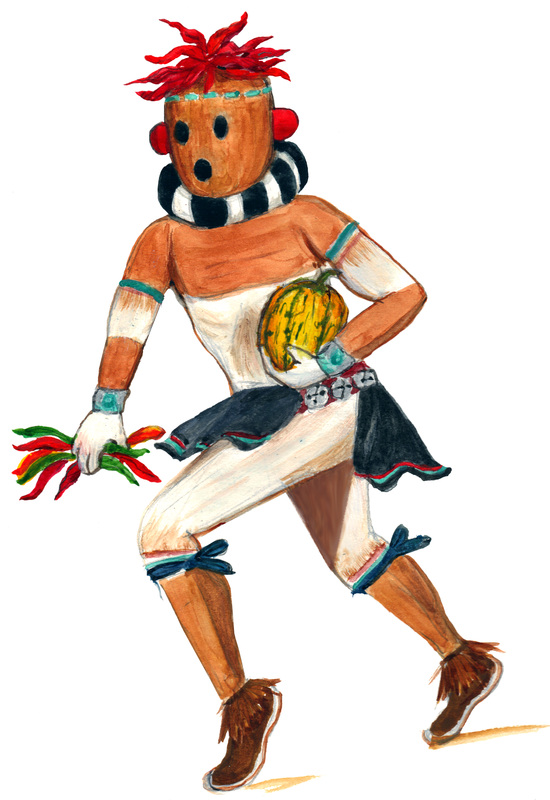| Earlier this month I released my debut novel, Totem. It was a relief and a worry about whether it was really finished or not. Then I heard a famous Leonardo da Vinci quote: Art is never finished, only abandoned. After years of writing and equal years in revision and editing, I knew the baby was ready to walk out on its own. But this work isn't wholly abandoned; it's part 1 of a series, and I'm already at work editing and fine-tuning book 2. Its protagonist, Tosh Cloudtree, is alive and well. . .just evolving. Evolution is a word to describe the whole project. Evolution of TOTEM Totem was an idea I had in high school for a comic book. Despite being born in New Mexico, very near the Hopi reservation, at the time, I was living in Northwest Montana (which is oddly a regional extension of the "Northwest" which includes Washington and Oregon). There were a lot of totem poles, especially in Seattle, where I often visited during that time. |
- I needed to do research on Native American myths / spirituality.
- Learning how to write would be a plus. I had written for the Bigfork High newspaper and found that writing was my calling, but I knew that there was more to writing professionally that what I was prepared to do.
- I needed a girlfriend ASAP or I'd go crazy.
So began my long journey from post high school youth to something vaguely resembling adulthood: jobs, renting, transportation, girlfriends, and coping with the lack of all the above. Living, it turns out, is expensive. The distractions of surviving and socializing left little time to write seriously. I didn't have a computer or even access to one. The first fragment of Totem that I ever wrote down wan while visiting my aunt, uncle, and cousins in LA sometime in the mid-late 90's. I sat down on my cousin's old B&W Mac and typed out a page and a half that began the dream sequence that still shows up in the book (it's closer to Tosh's second dream sequence, for those who read the book). Young Tosh running from some unseen terror as the land around him changes in ways that are beyond his control--the American Dream in a nutshell. Luckily, I hit print or nothing of that opening would have survived the eventual breakdown of my writing floppy disks.
Totem the Video Game?
Between 1999 and 2002 I worked for video game companies in the Bay Area. At some point it occurred to me that the dynamics of how the Totem mask and powers worked actually lent themselves to video game. Some fragment of a note survived in my journal, "Write proposal for Totem video game project." Then the dot com bubble burst, making speculative projects even further from everyone's mind.
While Totem burbled in the recesses of my unconscious, I made a point to collect books on Native American legends and lore. In about 2006, the ideas around Totem came up again when I needed an original comic book idea to work on. I met with an artist friend to hash out the story, and ideas began to solidify. My research began in earnest, starting with the sun symbol I'd drawn ever since I was small. Where was it from?
| I'll Follow The Sun As far back as I can remember, I'd draw this simple sun symbol over and over on the three-ring-hole-punched paper I used in class. The New Mexico flag is similar, but with four lines streaming out in each of the four directions. I asked a Zia artist about the three streak version while at a festival on the Santo Domingo pueblo. The man, in his 40's, said that variation was only for a shaman and he himself wasn't allowed to draw it. But earlier, my mother said it was a Hopi symbol, so I filed the info away and eventually found a copy of Book of the Hopi, by Frank Waters. In this, I found the most unusual book of Native American lore, myth, or spirituality that I'd ever come across. |
 Thumbnail quick sketches to aid scripting of original 24 page Comic version of Totem #1
Thumbnail quick sketches to aid scripting of original 24 page Comic version of Totem #1 From Graphic Novel to Prose Epic
I wrote the script for a 24 page comic book (calculating how many panels will properly fit on a page and describing them is a fine art unto itself), and it was good. It completely stayed in the future timeline until the future protagonist began to read from Tosh Cloudtree's journal. End of comic 1.
Hmm. This is a bigger story than I thought.
In 2010, I decided to write the epic in prose and see where the story led me in a more fluid way--unencumbered by panel counts.
Little did I know how many things I didn't know…about prose-novel technique. How best to use attributions (e.g. , he said.) and where to pepper in physical descriptions of characters and where to let them talk, etc. etc. My first draft took a while and I ended up with over 650 manuscript pages. Another thing I didn't know was that first time novelists should keep it closer to 120,000 words or less (about 400 ms pages).
Cutting, Editing, Rewriting, Cursing--Repeat!
So I had to figure out how to take my story, cut it in half, and make it "work." Sounds easy, but the editing process awaited. Thus began the long dark relocation march of the soul. It was excruciating most of the time, with glimmers of inspiration. My editing-minded wife helped a lot. Various friends gave feedback. I found a critique group who helped tremendously. Fortunately I was committed enough to keep an open mind and actually learn from each mistake. Most of them, anyway. After critiques and slashing the entire future timeline (to be used later), I had gained several things:
- More knowledge about the particulars of prose writing than I dreamed possible (with the assurance that, at each moment I didn't know what I didn't know).
- A tighter and better book.
- The realization that when I wrote my first draft, I actually wrote 2.5 novels. Book 2 is a finished draft, in revision. 3rd book has a lot of chapters and outline material, but will take some work to make it stand on its own. That's the fun part.
| Keeping the Visual Elements Totem isn't a graphic novel or a movie (yet), but Native American art and symbolism play so heavily into the story that I wanted to honor the visual elements of Native culture. Only a few months before Totem's release, I went ahead and decided to have an illustration of some kind at the top of each chapter. I spent hours working through graphic elements, found free Native American designs online, made some of my own, and incorporated a few illustrations I had created while writing, and one from my mother from an earlier pepper sauce endeavor (The chili pepper kachina, Tsil). I also asked my mother, Teri, who's an accomplished artist in her own right, if she could work up some ideas for an eventual cover. The concept of taking characters from the book and forming someone semi-iconic and representative of a totem pole (the man, the kachina, and the owl) was her idea and I think it makes a promise that the book fulfills. Final Stretch My best advice to the would-be author nearing the end of their manuscript: It's not done until it's done. And as DaVinci told us, it's never done, only abandoned. My point is,
|



 RSS Feed
RSS Feed